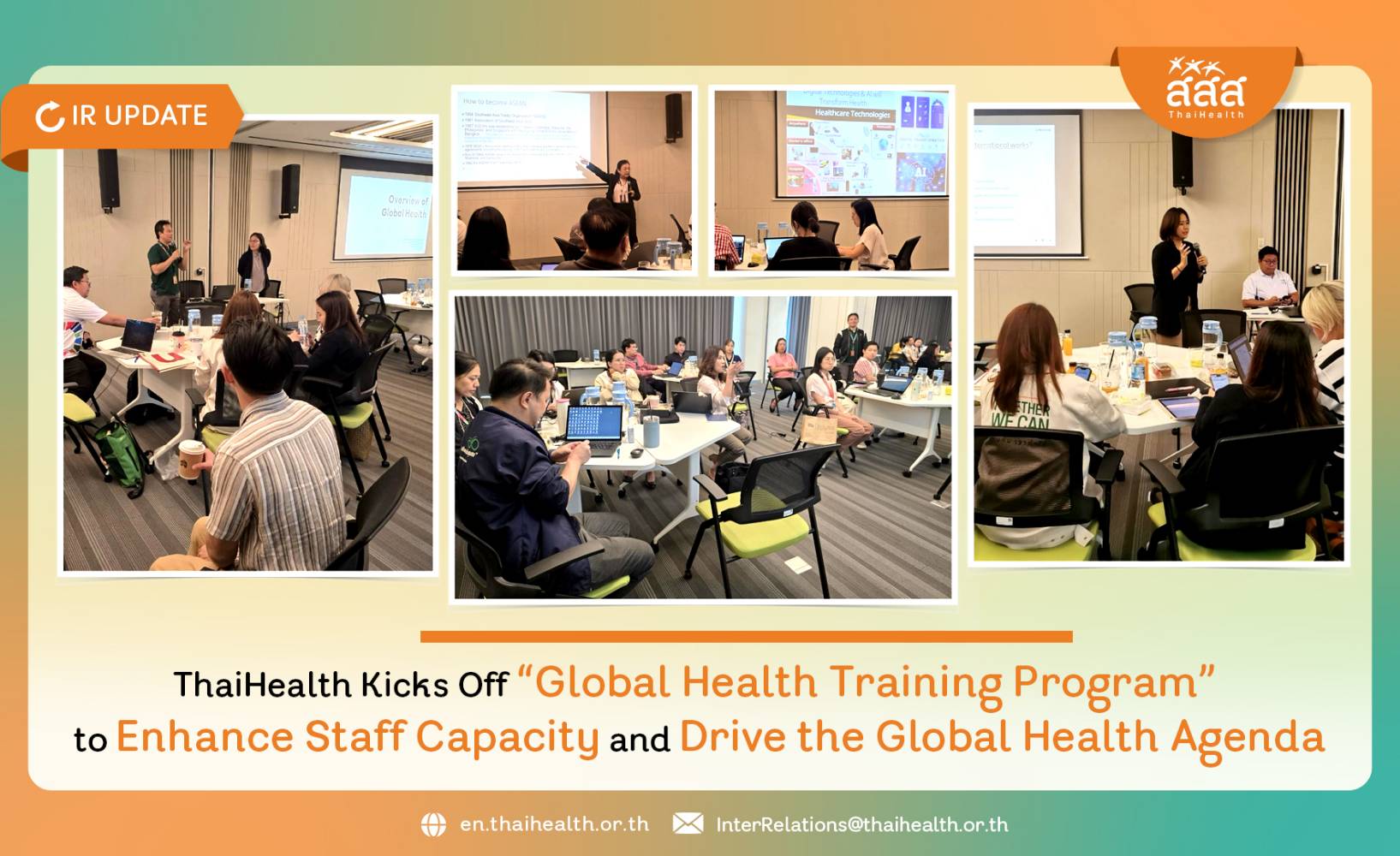
ThaiHealth backs plan to cut down salt consumption by 30% by 2025 following shocking discovery of 22 million salty-tooth NCD patients

‘Poor Kidneys!’ Popular delicacies such as all-you-can-eat and Mukratha buffets, and ready-to-eat meals are one of the causes of NCDs among 22 million Thai people who consumed almost double the suggested limit of salt consumption. The Ministry of Public Health, Thai Health Promotion Foundation (ThaiHealth), Mahidol University, and Less Salt Network, have backed the policy to reduce the sale consumption among Thai people by 30% by 2025 to reduce the risk of diseases.

Feb 7, 2023 — Director General of Public Health Ministry’s Department of Disease Control, Dr Thares Krasanairawiwong, spoke at the Department of Disease Control that the emergence of Non-Communicable Diseases (NCDs) has become one of the country’s biggest health problems with fatality rate of 73%. And one of the root causes of these diseases are excessive amounts of sweeteners and salt. As for salt, Thai people averagely consume 9.1 grams of salt per day, higher than World Health Organisation’s suggested amount by 1.8 times (suggested amount is 5 grams per day). Consumption of such an amount could cause high blood pressure, which, in turn, leads to life-threatening complications. There are reportedly 22.05 million hospitalised patients related to the consumption of excessive sodium, 13.2 million with high blood pressure, 7.6 million with kidney diseases, 0.75 million with heart diseases, and half a million people with stroke.
According to Dr Thares, the UN resolutions on the follow-up of 9 prevention and control of NCDs have contributed to Thailand’s mechanisms of driven strategies to reduce the consumption of salt in Thailand for 2016-2025 with the mission of successfully reducing sodium consumption by 30% by 2025. In response to the policy, the Ministry of Public Health, ThaiHealth, along with its strategic partners, will go on with four missions: 1) campaigning for voluntary alteration of recipes among food industrial players, 2) campaigning for voluntary alteration of recipes among food stalls, 3) educating the general public on the benefits of GDA (guideline daily amount) labelling or ‘alternative label for health’, and 4) organising activities to create healthy environments where the general public can learn about the benefits of food with reduced sodium in hospitals, workplaces, business establishments, and in communities — all to achieve the goal of reduced salt consumption.

Manager of Thai Health Promotion Fund and Acting Director of ThaiHealth’s Healthy Lifestyle Promotion Section, Dr Pairoj Saonuam, said that ThaiHealth and Less Salt Network will develop the knowledge base and innovations, push for the future realisation of a public policy, promote the use of salt alternatives so as to reduce the use of natural sodium, salt-o-meter to detect amount of salt, and develop a database of sodium amount in various food ingredients. To realise the enforcement of the policy, ThaiHealth has also developed a campaign against excessive salt consumption while promoting behavioural changes, better selection of food by focusing on meat and vegetables rather than seasonings. The campaign can be found at Facebook page: ลดพุง ลดโรค
“The campaign to urge the general public to change their behaviour by reducing salt consumption is a difficult task as we know Thai people are known for their love of tasteful food. Each person’s taste buds differ depending on different habits, so consumer awareness should take priority. ThaiHealth is now joining hands with Public Health Ministry’s Disease Control Department, Finance Ministry’s Excise Department, Less Salt Network, Mahidol University’s Faculty of Medicine at Ramathibodi Hospital, to propose a sodium tax which will be used as a standard threshold for this country’s industries, under an effort to reduce the amount of sodium in food that is good for people’s health,” said Dr Pairoj.

Meanwhile, President of Less Salt Network, Assoc Prof Surasak Kantachuvesiri, said that the love of salty food is considered a silent threat to Thai society. The peril may not be obvious among salt-sensitive people except for the elderly or those with certain medical conditions where swelling eyelids, swelling legs, high blood pressure, constant headache, and frequent thirst, are common. The worrying issue is the increasing rate of younger people aged 35-40 are reported with kidney disease or kidney failure compared to the original statistics where it is more common in people aged 50-60. The two main causes of salty food addiction are: 1) the changing eating culture where more people eat ready-to-eat meals, grilled or Mukratha buffet, Japanese or Korean food, or foods with higher level of salt or other seasonings, and 2) childhood habit that remain until they are adults among people who consumed high level of salt mostly in crunchy snacks, instant noodles, cup congees and noodles, or salty food that parents cooked.
“The survey results of sodium content in food with Salt-o-Meter conducted in Thailand’s pilot health service areas of 1, 2, 3, 8, and 10, have found that as much as 95% of restaurants and food stalls use cheaper ready-made food seasoning rather than making soup from vegetables or meat. More importantly, it was also found that the use of Salt-o-Meter along with field education work was sufficiently practical and could successfully help reduce salt consumption and blood pressure in several communities, without having to wait for laboratory results. The Salt-o-Meter is also proven to be a tool to quickly build awareness among the general public. Therefore, there should be more effort to promote the use of Salt-o-Meter as a standard equipment in sodium level testing in restaurants and shopping centres,” Assoc Prof Surasak explained.

Director of NCD Division, Department of Disease Control, Dr Krisada Hanbanjerd, said that there are a total of six provincial-level guidelines under the project to monitor the saltiness level and reduce salt consumption, which are: 1) compile a complete statistics and status report of food consumption and sources of high salt/sodium based on readings from Salt-o-Meter, 2) write up the provincial- and district-level directions, 3) improve low-sodium environments in schools, hospitals, workplaces, business establishments, and communities, 4) campaign to adjust the level of salt and sodium in food on sale, 5) educate the general public about the adverse impacts, raise awareness on the risks in communities, and 6) expand the coverage of the project from 48 communities in 36 provinces under the available mechanisms provided by each District-Level Life Quality Improvement Committee, to all communities nationwide by 2025.

Dean of the Faculty of Medicine, Mahidol University, Dr Banchong Mahaisavariya, further elaborated that Mahidol University is now an active player to push for the wider use of Salt-o-Meter and more vigorous education trips in pilot communities. At the same time, the university will also organise a campaign titled “Healthy University: Low-Sodium Policy” to raise awareness among food producers, university personnel, and students. It will also organise regular Low-Salt Markets, Low-Salt (but delicious) Food Contest, Low-Salt Promotional Video Contest, Low-Salt Hackathon to discover new salt reduction innovations made by students, in order to use these innovations in further campaigns.
rn






